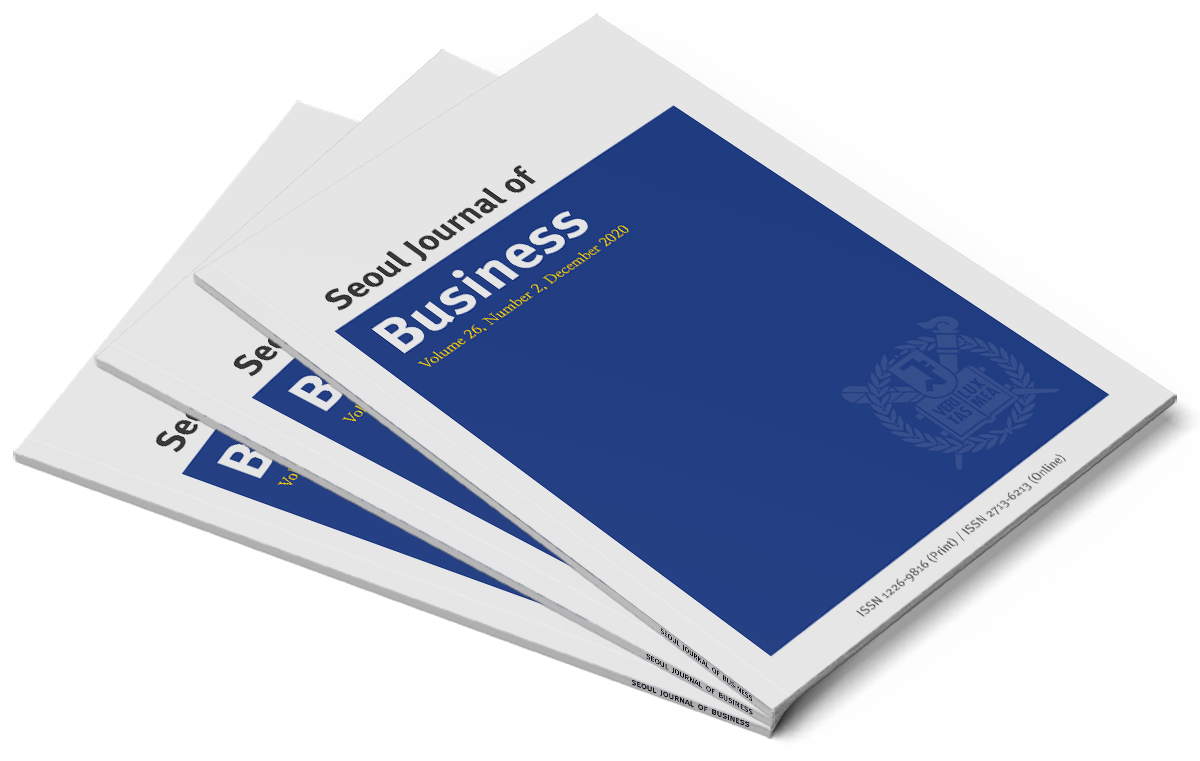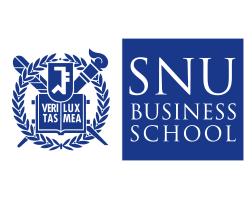Recent Issues
Vol.23/1 (2017, June)
The Impact of Non-Financial Stakeholders on Accounting Conservatism: The Case of Labor Unions
Author HSIN-YI (SHIRLEY) HSIEH, BOOCHUN JUNG, HAN YI
Keywords Accounting Conservatism, Conditional Conservatism, Labor Unions, Layoff
Download
This study examines the relation between labor union strength and
conditional accounting conservatism. We argue that labor unions can
have an increasing or decreasing effect on conditional conservatism due to
considerations associated with layoffs and job security of union members.
Using Basu’s (1997) asymmetric timeliness framework and multiple
measures of union strength, we find that labor union strength leads to less
conditional conservatism, even after controlling for known determinants
of conditional conservatism. Our results are robust to endogeneity tests as
well as a battery of other sensitivity tests. We further demonstrate that the
negative relation likely results from unions’ ability to reduce the likelihood
of layoffs. Overall, we provide fresh evidence about the impact of a key nonfinancial
stakeholder, namely labor unions, on an important property of
earnings.
Vol.22/2 (2016, December)
The Effects of Trait Positive Affect on Autonomy and Task Cohesion: The Moderating Roles of Individual Affective Dissimilarity and Group A ffective Diversity
Author Moon Joung Kim
Keywords trait positive affect, affective dissimilarity, affective diversity, autonomy, task cohesion
Download
In the present study, I examine how an individual’s trait positive affect
(TPA) may interact with those of group members to generate important
individual outcomes, such as autonomy and task cohesion. The proposed
multilevel moderated mediation framework was tested using data collected
from 293 employees in 66 workgroups. Results demonstrated that the
indirect effect of TPA on task cohesion through autonomy is stronger when
individual affective dissimilarity is low and group affective diversity is
high. The analysis also confirmed the role of autonomy as the mediating
mechanism between TPA and task cohesion.
Vol.22/2 (2016, December)
Why Does Forgiving Boost Creativity? The Role of Cognitive Persistence
Author SU SANG LEE, EUN JIN JUNG, JUNHA KIM, SUJIN LEE
Keywords forgiveness; creativity; cognitive persistence; conflict; dual pathway to creativity model
Download
This study elucidates the specific cognitive mechanism by which the
act of forgiving enhances creativity. We use the dual pathway to creativity
model to examine whether the act of forgiving increases creativity via
cognitive persistence (generating detailed ideas within a small number of
categories), but not via cognitive flexibility (generating multiple categories
and switching ideas between categories). Two experiments conducted
Vol.22/2 (2016, December)
Testing Human Relations Hypothesis of the Hawthorne Studies
Author JEONG-YEON LEE
Keywords Hawthorne studies, social facilitation, social learning process, human relations, time series analysis
Download
Employing the method of time series analysis, this paper analyzes data
obtained from the Hawthorne experiment from the perspective of human
relations. Although previous studies adopted statistical tools to analyze the
“first relay” experiments, direct inclusion of “human relations” variables was
absent. The study includes “human relations” variables that suggest social
facilitation and social learning process in the statistical analysis. Unlike
previous studies, the direct inclusion of such variables resulted in the
support for the human relations hypothesis.
Vol.22/2 (2016, December)
Which Performance Feedback Triggers Problemistic and Institutional Search in the Semiconductor Industry? Profit vs. Growth
Author SOO YON HAN, KYUNG MIN PARK
Keywords R&D intensity; performance aspiration; problemistic search; institutional search
Download
This paper investigates; first, the impact of profit and growth aspirations
in triggering problemistic search; second, the existence of institutional or
imitational search; and third, the influence of performance aspirations on
institutional search in the global semiconductor industry. The empirical
results show that the growth aspiration is a more significant performance
measure affecting R&D intensity and the strong institutional search
behavior is also evident in our research setting. The institutional search
behavior is found to be strengthened by poor growth but weakened by low
profit, suggesting a shift of attention between aspiration and survival when
imitating others in R&D investment.
Vol.22/1 (2016, June)
Leader’s Role in Fostering Creativity:The Creativity Creation Model at KT AIT
Author SEONGWUK MOON, JAEHO SHIN, HONGSUK YANG, JAMES WON-KI HONG
Keywords creativity creation model, leadership, innovation performance
Download
To achieve innovation, constraints that block the effect of a company’s
creative culture on innovation and creativity in the organization have to
be removed. We propose the creativity creation model that takes account
of these constraints and suggest that, to cultivate an innovative climate,
Vol.22/1 (2016, June)
Top Managers’ Political Conservatism and External Governance Choices
Author JONGSUB LEE, KWANG J. LEE
Keywords CEO political conservatism, corporate governance conservatism, external governance choices, entrenchment discount, G Index, E Index, staggered board, limits to amend bylaws, supermajority JEL Classification: G34
Download
We develop a theory of corporate governance conservatism that reflects
the preference of politically conservative chief executive officers (CEOs)
for stability and continuity in corporate governance provisions without
managerial entrenchment. Our theory suggests that conservative CEOs
tend to prefer corporate governance provisions against hostile takeover and
drastic board turnover, but their emphasis on hard work and self-discipline
are likely to lead them to run their firms more efficiently with less debt.
Using a sample of 2,339 U.S. corporations in the 1996-2006 period, we
find strong empirical support for this new theory. Firms with Republican
CEOs, who are known to be politically conservative, are more likely to
stagger the terms and elections of directors, limit shareholders’ ability to
amend corporate bylaws and require supermajority for approval of mergers,
but those CEOs are not associated with a significant impairment in
shareholders’ value. Rather, we find firms run by Republican CEOs tend to
have higher return on assets and lower leverage, consistent with the results
documented by Hutton, Jiang, and Kumar (2014). Overall, our theory and
empirical results highlight an important spillover effect of top managers’
Vol.22/1 (2016, June)
Why Do Some Asset Pricing Models Perform Poorly? Evidence from Irrationality, Transaction Costs, and Missing Factors
Author JOON CHAE, CHEOL-WON YANG
Keywords Asset Pricing Model; Transaction Cost; Investor irrationality; Missing Risk Factor; Fama and MacBeth (1973) Regression.
Download
We identify and horse race three causes for the underperformance of
some asset pricing models: investor irrationality, transaction costs, and
missing risk factors. Specifically, we regress the difference of realized over
expected returns (pricing error) per various asset pricing models onto
proxies for the reasons for explanatory breakdown. First, for the capital
asset pricing model (CAPM) and six other models we find that both investor
irrationality and transaction costs are significantly related to the pricing
error controlling for firm size and valuation. Second, models with more risk
factors than the CAPM cannot overcome the shortcoming of the CAPM due
to investor irrationality and transaction costs. In conclusion, transaction
costs and investor irrationality are shown to be impediments to enhancing
Vol.21/2 (2015, December)
The Hierarchy Myopia of Organizational Learning
Author NAMGYOO K. PARK, KIRA CHOI, JINJU LEE
Keywords myopia of learning, hierarchy, organizational learning performance
Download
Previous studies have been interested in how to maximize both the
efficiency and the effectiveness of organizational learning. On the flipside,
some studies have investigated the critical barriers to learning. We suggest
organizational hierarchy as another cause and theoretically explore
how it can deter learning performance. Specifically, we argue that the
configuration of structure determines a prevalent form of learning method
in an organization to consequently affect its learning performance. Using
simulation modeling, we show that non-hierarchical organizations may
be a better learning environment than hierarchical organizations. We also
show that the contextual factors, such as problem complexity and member
regrouping, may affect the base-line result. This study subsequently calls
for further attention be paid to the key issues concerning the hierarchy and
organization learning performance.
Vol.21/2 (2015, December)
Does Emotional Intelligence Matter in Interpersonal Processes? The Mediating Role of Emotion Management
Author JIN NAM CHOI, GOO HYEOK CHUNG, SUN YOUNG SUNG, ARIF NAZIR BUTT, MOATAZ SOLIMAN, JIN WOOK CHANG
Keywords emotional intelligence, emotion management, interpersonal behavior, negotiation
Download
Researchers have identified emotional intelligence (EI) as an important
individual characteristic that predicts interpersonal effectiveness. In this
study, we identified three potential areas of emotion management (emotion
expression, emotion recognition, and shaping counterpart emotion) that
may be promoted by intrapersonal and interpersonal EI, and may mediate
the effects of EI on interpersonal process and outcomes. Our analysis
of data from a dyadic negotiation simulation indicates that EI predicts
one aspect of emotion management (shaping counterpart emotion).
Intrapersonal EI (but not interpersonal EI) increased counterpart positive
emotion and decreased counterpart negative emotion during the negotiation
simulation. Nevertheless, the overall relationship between EI and emotion
management was weak. The present study highlighted the need for clearly
conceptualizing and investigating emotional management through which
individuals accrue interpersonal and performance benefits.
Seoul Journal of Business

ISSN 1226-9816 (Print)
ISSN 2713-6213 (Online)
ISSN 2713-6213 (Online)


